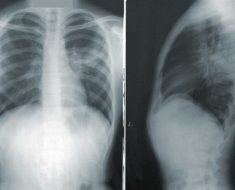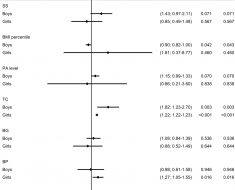Successfully arresting the spread of severe acute respiratory syndrome coronavirus 2 (SARS-CoV-2) – the causative pathogen of coronavirus disease 2019 (COVID-19) – requires global vaccination. While high-income countries have already begun vaccinating their citizens, developing and lower-income countries are not expected to ramp up their vaccination programs until next year — increasing the risk for more local outbreaks.
Given the risk of SARS-CoV-2 developing new variants in unvaccinated individuals, vaccination sites are crucial. However, new research, from the University of Michigan, UC Berkeley and Oberlin College in the USA, shows current vaccination programs may be worsening regional outbreaks when viral strains and SARS-CoV-2 escape mutations outdo vaccination rates.
-2.jpg)
The research authors developed an adaptive vaccination program to mitigate regional outbreaks. The program uses real-time monitoring and surveillance of new and currently existing strains and reinfection data to provide reliable information that could help design effective vaccination programs.
The team writes:
Accurate forecasting of the future course of an epidemic in terms of strain composition and vaccination program efficacy require data on the rates at which immunity wanes, how such immunity depends on particu109 lar strains, and the levels of cross-immunity among strains that are more comprehensive than currently available.”
Based on the findings, the researchers hope to expand the model to other infectious diseases beyond SARS-CoV-2.
The study “Adaptive vaccination may be needed to extirpate COVID-19: Results from a runtime-alterable strain-drift and waning-immunity model” is published on the medRxiv* preprint server.
Monitoring waning immunity using J-RAMP
The researchers developed a JAMA runtime alterable modeling program (J-RAMP) to create a susceptible-infected-recovered (SIR) individual-based model that would monitor immunity levels for SARS-CoV-2 in a community.
The platform can analyze pathogen strain-specific shedding, continued viral presence in the area with host replication, and mortality rates. It also looks at immunological waning with strain cross immunity, pathogen strain drifts during transmission and within-host replication, an adaptative contact rate, and processes to shape an effective and time-dependent vaccine rollout.
The study's objective was to look at the consequences of not vaccinating enough individuals in the face of more virulent SARS-CoV-2 strains. They also looked at how their model for adaptative vaccination worked against currently circulating strains. They modeled COVID-19 outbreaks over 3 years, where vaccination rollouts began in the second year and continued until the end of the third year.
Modeling results
Current vaccination rollouts may be detrimental because they do not monitor the emergence of new strains and adapt their vaccine strategies to match dominating strains. The findings suggest adaptive vaccination programs taking these factors into account would be more likely to eliminate local epidemics than non-adaptive policies.
Also, the researchers note that adaptive vaccination programs would be more suited towards combating new escape mutations and preventing reinfections by shifting the prioritization of vaccines that would stop these mutations rather than other less transmissible strains in the area.
Overall, the modeling simulations suggest that not taking immunological characteristics of host cells and SARS-CoV-2 mutation rates makes it more difficult to stop the spread of COVID-19 in the next few years.
Benefits of using SEIVD-IBM J-RAMP
Given the multiple SARS-CoV-2 strains, models incorporating multi-strain dynamics and other epidemiological information are needed. The researchers suggest the platform would be beneficial in modifying vaccination strategies based on emerging and circulating strains such as B.1.1.7 and P.1. More information — transmission rate, virulence, viral shedding, and environmental persistence — could be acquired in specific strains confined in some regions of the world.
The platform can be enhanced further by incorporating cross-immunity data, waning immunity rates, and within-host competition values. Since some vaccines differ in effectiveness and cross-immunity, the researchers note it’s important to make the parameters in the model vaccine specific.
The researchers write:
The J-RAMP presented here, with appropriate elaborations that will become evident through its future application, such as being able to compute the best time to administer booster shots of the same or different strain valencies to individuals, should play a decisive role in the rational design of effective and efficient COVID-19 vaccination programs worldwide.”
*Important Notice
bioRxiv publishes preliminary scientific reports that are not peer-reviewed and, therefore, should not be regarded as conclusive, guide clinical practice/health-related behavior, or treated as established information.
- Getz WM, et al. Adaptive vaccination may be needed to extirpate COVID-19: Results from a runtime-alterable strain-drift and waning-immunity model. medRxiv, 2021. doi: https://doi.org/10.1101/2021.06.07.21258504, https://www.medrxiv.org/content/10.1101/2021.06.07.21258504v1.
Posted in: Medical Science News | Medical Research News | Disease/Infection News | Healthcare News
Tags: Coronavirus, Coronavirus Disease COVID-19, Efficacy, Evolution, Infectious Diseases, Mortality, Mutation, Pandemic, Pathogen, Research, Respiratory, SARS, SARS-CoV-2, Severe Acute Respiratory, Severe Acute Respiratory Syndrome, Syndrome, Vaccine

Written by
Jocelyn Solis-Moreira
Jocelyn Solis-Moreira graduated with a Bachelor's in Integrative Neuroscience, where she then pursued graduate research looking at the long-term effects of adolescent binge drinking on the brain's neurochemistry in adulthood.
Source: Read Full Article





